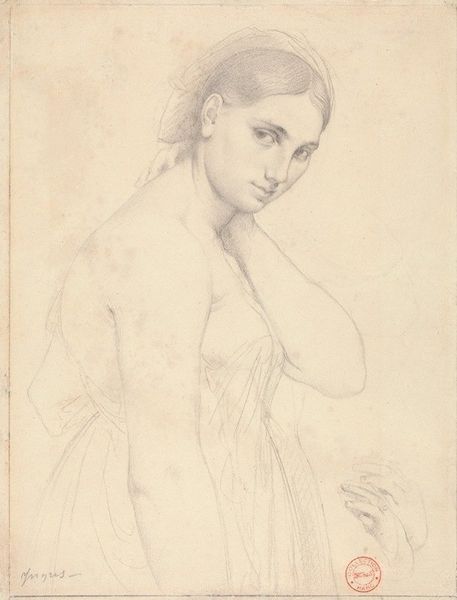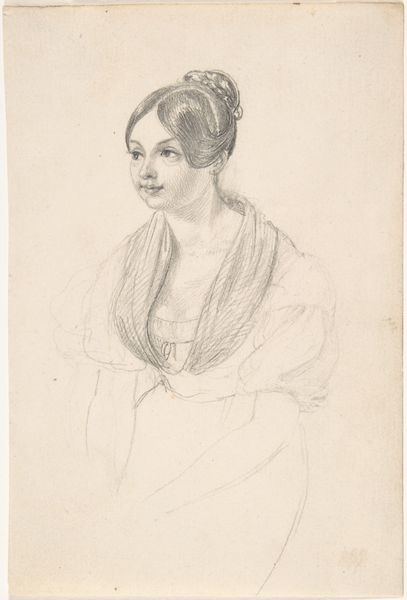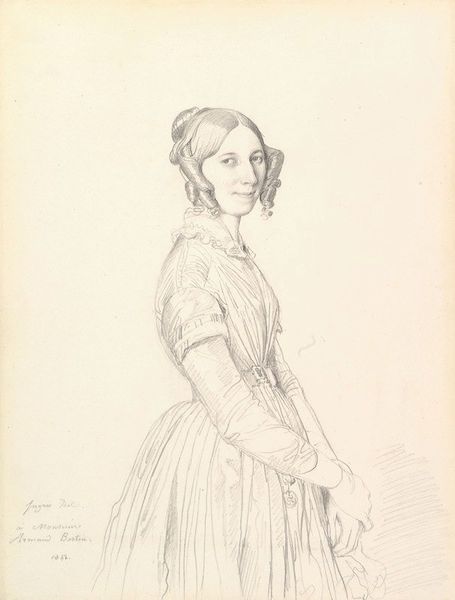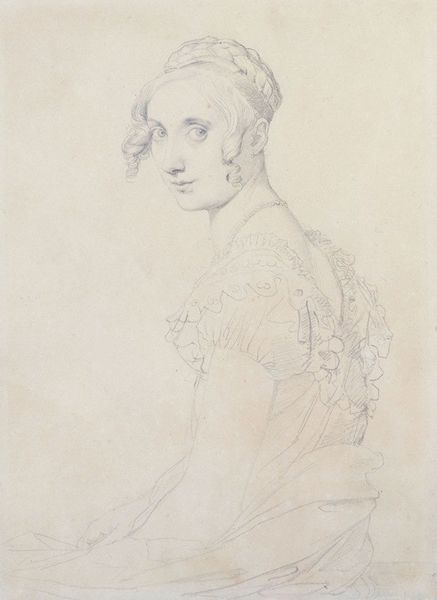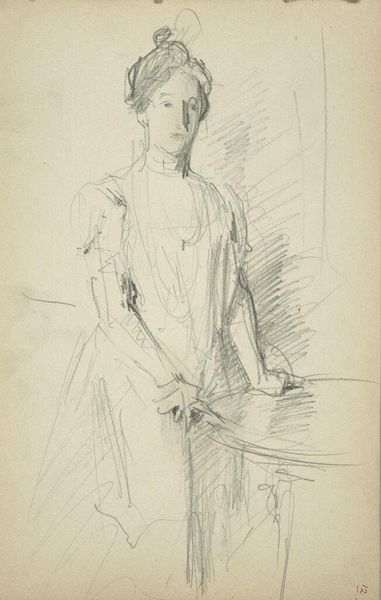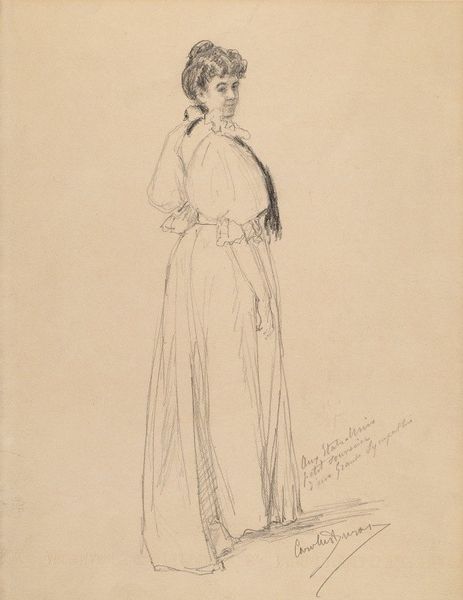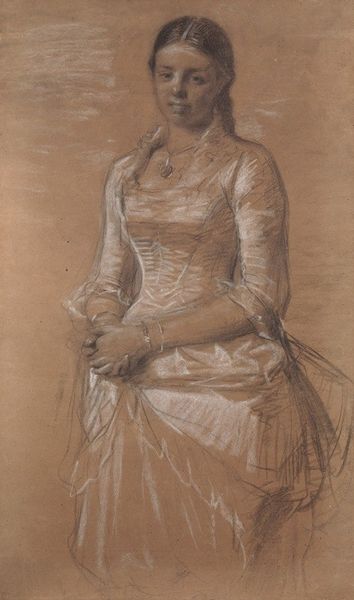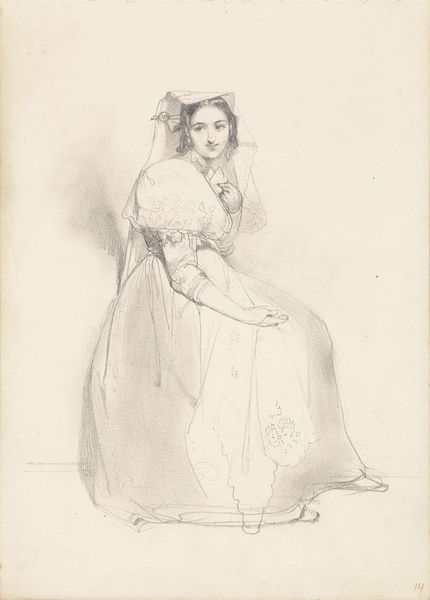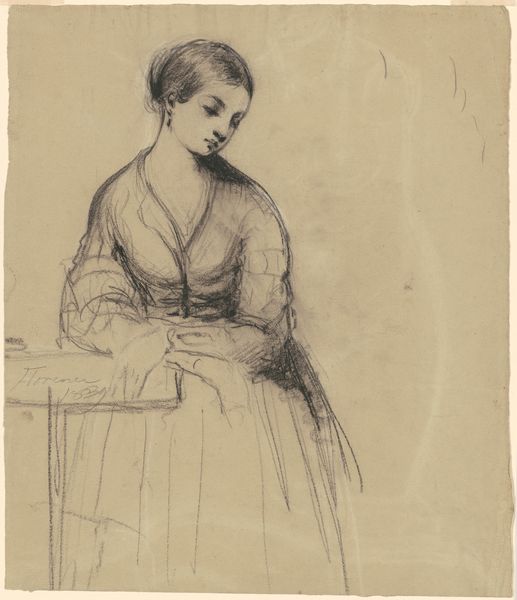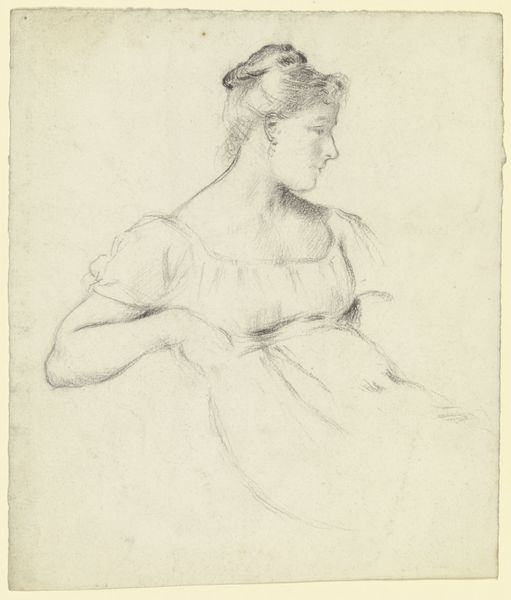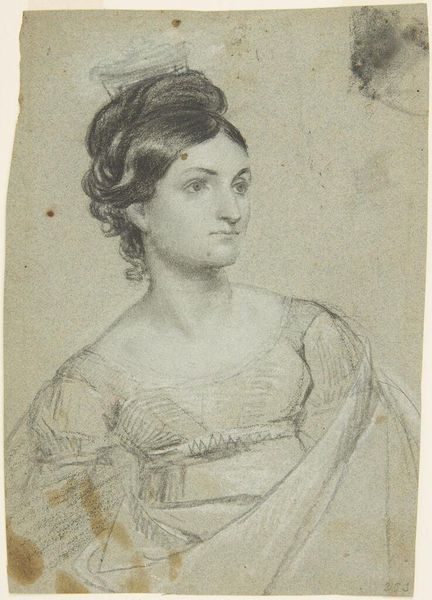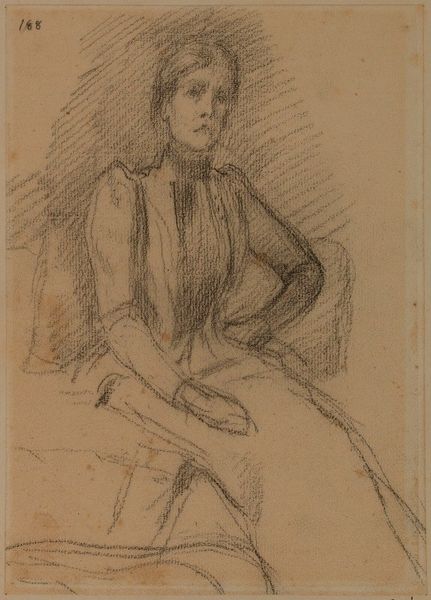
drawing, pencil
#
portrait
#
drawing
#
charcoal drawing
#
figuration
#
pencil drawing
#
intimism
#
romanticism
#
pencil
#
portrait drawing
#
academic-art
#
nude
Copyright: Public domain
Curator: This is Ernest Hébert's "Study for the Portrait of Marie Daubrée Delessert." Hébert was an academic painter, and here, he employs pencil and charcoal in what appears to be a preparatory sketch for a more formal portrait. Editor: The soft gradations in the charcoal lend a real gentleness to the image. It almost feels like a whisper of a portrait, you know? So intimate and ethereal. Curator: Indeed. Hébert's academic style often focused on idealized beauty, and we can see elements of that here. Notice how the subject’s profile is classical, almost reminiscent of a cameo. This drawing also speaks to the art market and the rising middle class of 19th century France who would acquire these intimate, personal images. Editor: But the way the robe slips off her shoulder and how averted her gaze is also adds an erotic charge to this seemingly chaste presentation. The partial nudity and that side profile create a tension, a delicate balance between propriety and implied sensuality. Does this say anything about the status of women within these classes? Or just what men did to represent them at the time? Curator: I think both interpretations have merit. Certainly, the male gaze is present, shaping how women were depicted and consumed within artistic circles. However, intimacy was also highly valued during the Romantic period, and nude studies were academic exercises as well. Editor: Still, the work exists. It does not fully escape from the art historical cannon’s history of mostly men depicting mostly women. How was she really perceived beyond the painting, who was she beyond being objectified by others? Curator: Contextually, we have to remember academic art had institutional authority at that time. Its style, composition and values would echo societal ones that would emphasize female passivity and beauty. The portrait itself could serve as a statement of wealth, beauty and cultural awareness of her family in society. Editor: The subtleties are compelling. Perhaps what fascinates me most is how such seemingly simple tools—pencil and charcoal—can convey so much about the sitter, the artist, and even the societal framework. Curator: Absolutely. The sketch unveils a layered perspective. Looking closely, there's almost a tenderness in Hébert's touch that speaks to the evolving status of art itself at that moment in time. It became an entry to higher society and intimate reflection. Editor: And a deeper dialogue with its social contexts in the contemporary one. Thank you.
Comments
No comments
Be the first to comment and join the conversation on the ultimate creative platform.
